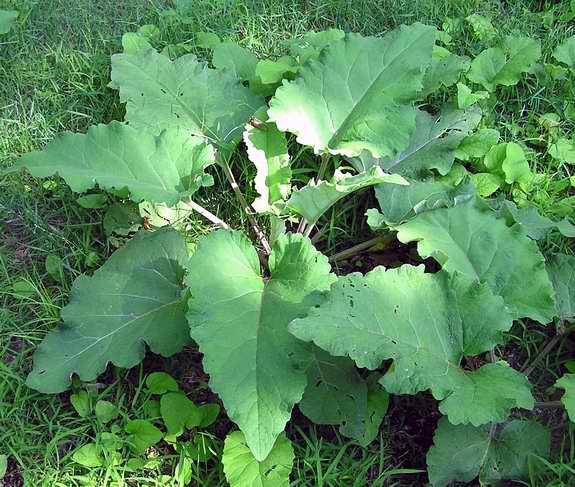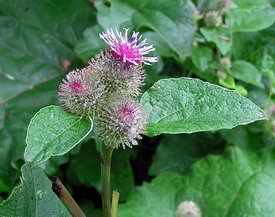|
Common Name: Common Burdock (Bur for the rough, prickly seedcase and dock referring to any tall, coarse weed), Beggar's Buttons, Gypsy Rhubarb, Wu Shih. Scientific Name: Arctium minus (Genus Arctium is from arktos, meaning bear, as a reference to the shagginess of the burs, minus is Latin for minor, or smaller Burdock)
Potpourri: Burdock disperses its seeds with burs that stick to animal fur. George de Mestral, the Swiss inventor of Velcro, was inspired by Burdock burs stuck to his dog, noting the tiny curved hooks.
Historically, burdock seeds were crushed to make a tincture used to treat a variety of ailments, including gout, ulcers, arthritis, rheumatism, and skin conditions such as acne and psoriasis.
Burdock is a good source of iron, minerals, the carbohydrate inulin, and essential oils. It is eaten as a vegetable in Japan where it is known as "gobo." The flower stalk can be eaten like celery once the green rind is removed. The roots can be boiled in baking soda until tender and then served mashed or fried with butter and seasoning like a potato. |

